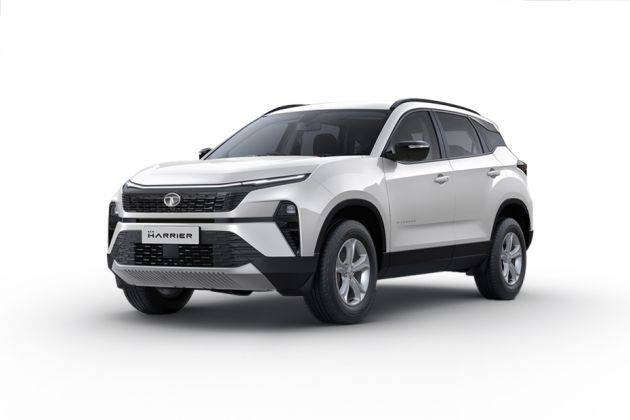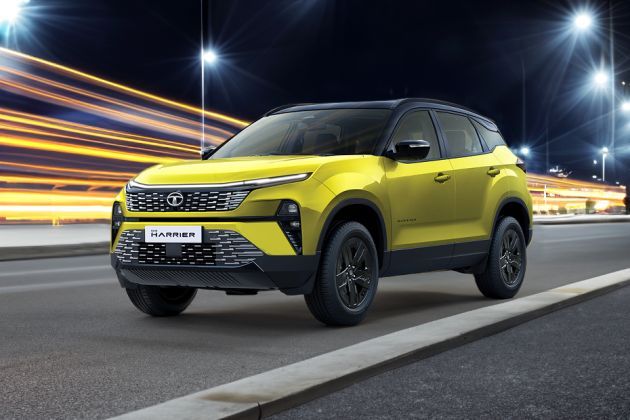Tata Motors Acquires Licensing Rights for Fiat’s 2.0-Litre Diesel Engine: A Strategic Powertrain Move
Tata Motors has taken a significant leap in its diesel powertrain strategy by acquiring the licensing rights for Fiat’s 2.0-litre Multijet II diesel engine from Stellantis, the parent company of Fiat India Automobile Private Ltd (FIAPL). This engine currently powers Tata’s popular SUVs, the Harrier and Safari, and is manufactured at the Ranjangaon facility, a joint venture between Tata Motors and Stellantis. The licensing agreement, finalized in the fourth quarter of FY2025, grants Tata Motors the authority to independently develop, modify, and upgrade this engine to meet evolving performance expectations and stringent emission norms without relying on Stellantis for approvals or incurring hefty licensing fees.
Tata Motors’ acquisition of the Fiat engine license is not just a technical upgrade; it’s a strategic pivot that could redefine how Indian automakers approach powertrain development. Historically, Indian manufacturers have relied heavily on foreign partners for advanced engine technology, often facing restrictions and high costs for modifications. By securing the rights to independently develop and recalibrate the 2.0-litre Multijet II diesel engine, Tata Motors has broken free from these constraints, setting a new benchmark for self-sufficiency in the industry.
This move also signals Tata’s commitment to long-term investment in diesel technology, even as the global market shifts toward electrification. While Tata is actively expanding its electric vehicle lineup, the demand for robust, efficient diesel engines in the SUV and utility vehicle segments remains strong in India. With the freedom to innovate, Tata can now optimize the Multijet engine for better fuel efficiency, lower emissions, and enhanced performance, extending the relevance and competitiveness of its diesel portfolio for years to come.


Greater Flexibility and Cost Efficiency in Engine Development
Previously, any modification or recalibration of the 2.0-litre diesel engine required Tata Motors to seek approval from Stellantis, a process that was both time-consuming and expensive. Minor changes, such as ECU remapping, reportedly cost Tata upwards of €10 million (approx. ₹97 crore), which limited the company’s ability to offer multiple engine variants or power outputs.
With the new licensing rights, Tata can now pursue performance enhancements and tailor the engine’s output independently. For instance, the company had aimed to increase the engine’s power from the current 170 HP to around 180 HP but was constrained by the dependency on Stellantis. Now, such upgrades can be implemented swiftly and cost-effectively, enabling Tata to diversify its engine offerings across different models and trims.
The licensing deal is expected to accelerate Tata’s product development cycles. Previously, any change to the engine—whether for performance tuning, emission compliance, or integration with new models—required lengthy negotiations and approval processes with Stellantis. Now, Tata’s engineers can rapidly prototype, test, and implement upgrades, allowing the company to respond more swiftly to market trends and regulatory changes. This agility could prove decisive as India prepares for stricter emission norms and shifting consumer preferences.
From a consumer perspective, the benefits are tangible. Tata’s SUVs, already popular for their design and safety features, will now offer even more compelling value propositions. Buyers can expect a broader range of engine options, including higher-powered variants for enthusiasts and more efficient versions for cost-conscious customers. This versatility will help Tata cater to a wider audience and strengthen its position in the competitive SUV segment, where differentiation is key.
The impact of the licensing agreement extends beyond Tata’s own lineup. Other automakers that source the 2.0-litre Multijet II engine from the Ranjangaon facility, such as MG Motor India, may have to reconsider their powertrain strategies. With Tata holding the development rights, it’s likely that future upgrades or variants of the engine will be exclusive to Tata vehicles. This could prompt rivals to invest in their own engine development programs or seek alternative suppliers, reshaping the competitive dynamics of the Indian automotive market.
The Ranjangaon facility itself stands to benefit from increased activity and investment. As Tata ramps up production to support new models and engine variants, the plant could see upgrades in manufacturing technology, workforce training, and quality control processes. This, in turn, will contribute to the broader ecosystem of automotive manufacturing in India, supporting jobs and technological advancement.
Implications for Tata’s SUV Lineup and Future Models
This strategic move is especially timely as Tata plans to expand the use of the 2.0-litre Multijet diesel engine beyond the Harrier and Safari. The upcoming Tata Sierra, expected to launch within the fiscal year, is also slated to feature this diesel powertrain. With full development control, Tata can create multiple states of tune for the engine—potentially offering a higher output version for premium trims and a lower-powered variant for entry-level models. This flexibility will help Tata compete more effectively in the highly competitive SUV segment by catering to diverse customer preferences and regulatory requirements.
Tata Motors’ newfound autonomy over the Multijet engine also opens doors for export opportunities. With the ability to develop engines tailored to different markets, Tata can explore new geographies where demand for diesel SUVs and utility vehicles remains robust. This could enhance Tata’s global footprint and reinforce its reputation as an innovative, world-class automaker.
The licensing deal aligns with Tata’s broader vision of sustainability and future readiness. By gaining control over a proven, efficient engine platform, Tata can experiment with hybridization, alternative fuels, or even bio-diesel adaptations. This flexibility will be crucial as the automotive industry navigates the transition to cleaner mobility solutions while meeting the diverse needs of Indian and global customers.
Manufacturing and Intellectual Property Rights
While Tata Motors now holds the rights to develop and upgrade the engine, the core intellectual property rights (IPR) remain with Stellantis. The production of the engine will continue at the Ranjangaon plant under the joint venture FIAPL. The licensing agreement does not alter the manufacturing arrangement but empowers Tata to innovate and optimize the engine independently. This autonomy is expected to accelerate development cycles and reduce costs, providing Tata with a significant competitive advantage.


Impact on Other Stakeholders and Market Dynamics
The licensing acquisition raises questions about the future availability of upgraded versions of the engine to other FIAPL customers, such as MG Motor India, which currently uses the Fiat 2.0-litre diesel in models like the Hector and Hector Plus. Industry reports suggest that MG may discontinue diesel variants with the launch of the new Hector in 2026, which could be influenced by Tata’s new control over engine development. Meanwhile, Tata’s ability to independently enhance the engine could lead to more innovative and performance-oriented diesel SUVs in the Indian market.
A Milestone for Tata Motors’ Powertrain Strategy
This licensing deal marks a pivotal moment for Tata Motors, signaling a shift towards greater self-reliance in powertrain technology. By reducing dependence on external approvals and costly licensing fees, Tata is positioned to respond more agilely to market demands and regulatory changes. The move aligns with Tata’s broader strategy to strengthen its product portfolio with advanced, efficient, and customizable engines, ensuring sustained growth in India’s competitive automotive landscape.
Tata Motors’ strategic acquisition is also expected to have a ripple effect on its supplier and dealer networks. With greater control over engine development and the ability to introduce new variants more rapidly, Tata can better coordinate with suppliers for timely component upgrades and ensure that dealerships are equipped to handle the latest technology. This streamlined approach will likely improve after-sales service, spare parts availability, and overall customer satisfaction, reinforcing Tata’s reputation for reliability and support.
Additionally, the move strengthens Tata Motors’ bargaining position in future collaborations and joint ventures. By demonstrating its capability to independently manage and innovate on critical technologies, Tata can negotiate from a position of strength with both domestic and international partners. This could open up new opportunities for technology sharing, co-development of advanced powertrains, and strategic alliances that further enhance Tata’s competitiveness in the global automotive arena.
Looking ahead, Tata Motors’ ability to independently evolve the Fiat Multijet II engine could serve as a springboard for developing its own proprietary diesel and hybrid powertrains. The expertise gained through this licensing arrangement will be invaluable as Tata invests in next-generation engines and alternative propulsion systems, ensuring the company remains at the forefront of automotive innovation as the industry transitions to a more sustainable and technologically advanced future.

Conclusion: Enhanced Performance and Competitive Edge
In summary, Tata Motors’ acquisition of the licensing rights for Fiat’s 2.0-litre Multijet diesel engine empowers the company with unprecedented control over one of its key powertrains. This development promises faster innovation, cost savings, and the ability to offer tailored engine variants, enhancing the appeal of Tata’s SUVs like the Harrier, Safari, and upcoming Sierra. As emission norms tighten and customer expectations evolve, Tata’s newfound autonomy in engine development will be crucial in maintaining its leadership in the diesel SUV segment.
Industry observers note that Tata’s move could inspire other Indian manufacturers to pursue similar deals, fostering a culture of innovation and technological independence. As the government pushes for greater localization and value addition in the automotive sector, Tata’s success could serve as a blueprint for others seeking to reduce reliance on imported technology and build homegrown capabilities.
Finally, the acquisition underscores Tata Motors’ evolution from a value-focused manufacturer to a technology-driven leader. The company’s investments in research and development, design, and advanced engineering are paying off, enabling it to compete not just on price but on innovation, performance, and customer experience. As Tata Motors leverages its new engine rights to launch more advanced, desirable vehicles, it is poised to shape the future of mobility in India and beyond.
Follow: TATA

